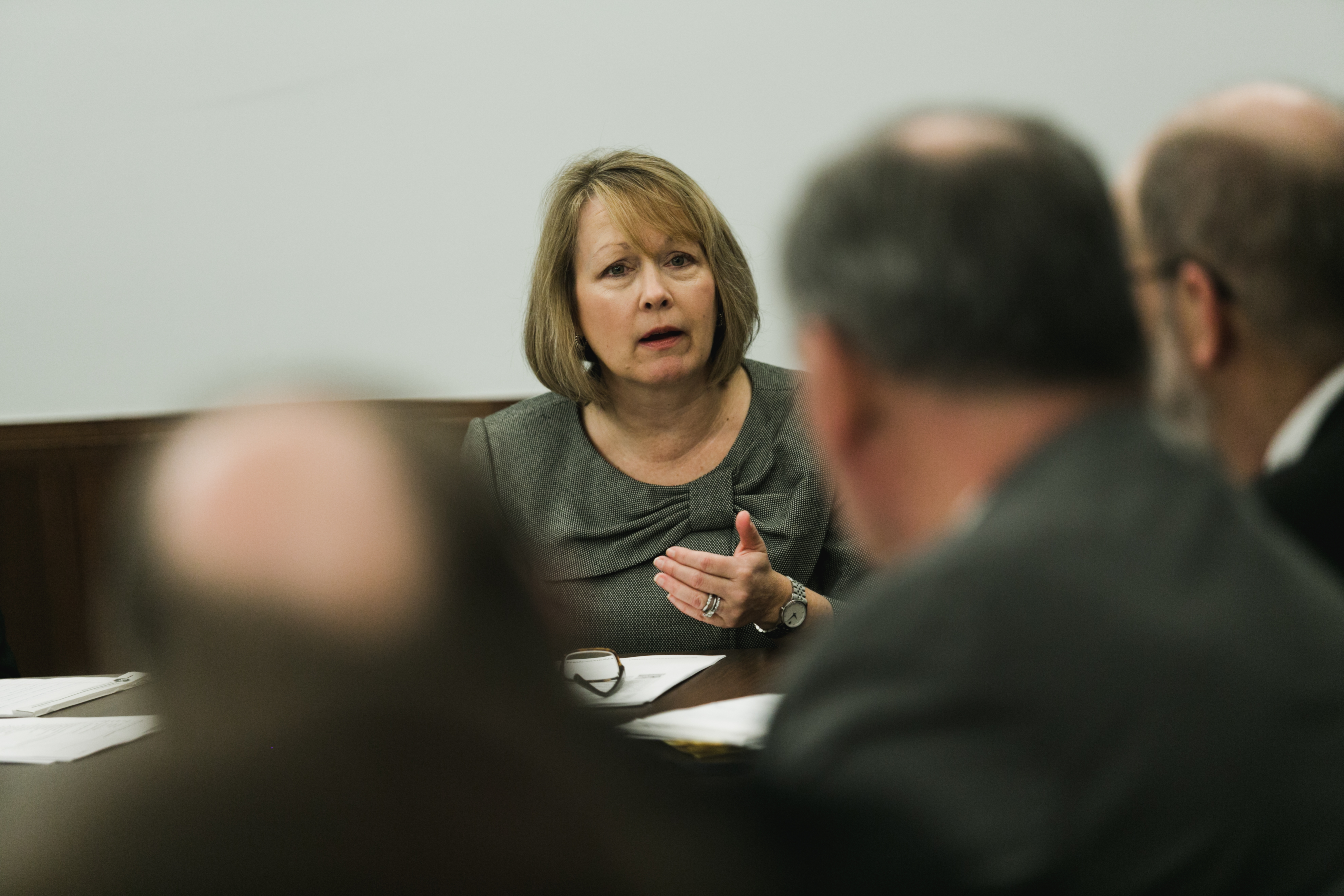Several education leaders testified Friday in support of a bill that would establish a new school funding program known as Foundation And Incentive Revenue (FAIR). Through FAIR, all Minnesota school districts start with a baseline funding which is adjusted by how well their students do on the 8th grade Minnesota Comprehensive Assessment (MCA).
“FAIR is a new state aid program that is the same for all school districts, and rewards districts for 8th grade proficiency on a three-year rolling average,” said Sen. Carla Nelson, chief author and Senate E-12 Finance Chair said as she introduced the bill to the Senate E-12 Committee.
SF 1885 defines total proficiency as a district’s three-year average percentage of students that meet or exceed proficiency on the 8th grade MCA for reading and math divided by the three-year statewide average. The total new dollar amount for the district would be the lesser of the district’s total proficiency multiplied by $200,000 or the district’s student population multiplied by $1,000. Learn more.
“FAIR combines a stable, foundational revenue for rural districts that closes to some degree the funding divide AND, with a three-year rolling average, links 8th grade achievement with funding to provide a return on investment for the necessary work to improve student achievement,” MREA Executive Director Fred Nolan said.
Added Funding Reward
MREA believes increases in student academic outcomes should be rewarded.“Student achievement does not just happen; it is a result of dedicated and sustained work over time,” said Jeremy Olson, Superintendent of Underwood and Henning in his testimony in support of FAIR. He testified that adding a pulse check at 8th grade makes sense, as there is a gap from grade 3 reading proficiency to graduation in World’s Best Workforce Plans and goals.
These dollars would be expended to continue the forward progress being made and further bolster the systems that have been implemented to achieve these outcomes. This funding would be used to provide more student one-on-one interventions, instructional coaching, and small group instruction.
“FAIR is fair in both being foundational for all school districts and in rewarding districts for taking steps to improve student achievement… In life, what gets rewarded, gets done,” Nelson said.
Support
Here’s a glance at the testimony by Greater Minnesota education leaders:
- “The stability of having a guaranteed foundation aid would assist us continue to provide our students proven successful programming during these volatile times,” was one reason John Cselovski, Superintendent of Sleepy Eye, testified in support of FAIR. He concluded, “We strongly support the SF 1885.”
- Sleepy Eye teacher leader Nancy Moore described the work they have done to “…analyze the alignment of our curriculum, instruction and assessment. Since that time we have written curriculum in all content areas from preK to grade 12. The backward design method of writing allows teachers to become totally immersed in their standards-based curriculum.”
- Jodi Arneson, a fellow teacher leader at Sleepy Eye, share how the school’s “Professional Learning Community meets once a month to study test results. Analyzing the data tells us strengths and weaknesses and from this we set learning targets for students. A specifically designed spreadsheet is used to differentiate the needs of students and create flexible learning groups for interventions in our Response to Interventions model. Our interventions run 30 minutes, four days a week for all grade levels.”
Pushback
There was some pushback from metro area legislators and from the Association of Metropolitan School Districts, mostly citing that there are current funding streams to help improve district test scores and that this being a new formula could take away from other funding formulas.
- The Association for Metropolitan Districts (AMSD) Executive Director Scott Croonquist advocated funding on the formula and funding for special education.
- Denise Dittrich of MSBA testified that [FAIR} is a “new, complex concept that needs to be evaluated for its long-term use.” She sees small schools being assisted with the expansion of QComp funding and telecom aid.
- Adosh Unni, speaking for MDE, testified that MDE’s experience with Literacy Incentive Aid has been disappointing. “There was a small bump at first but now the 3rd grade reading proficiency has stagnated,” he observed. He recommended doing more to assist districts at the “front-end,” and if [FAIR] was to focus on improving achievement, then there should be “strings attached to the funding stream.”
The bill was laid over for possible inclusion in the education finance omnibus bill.





